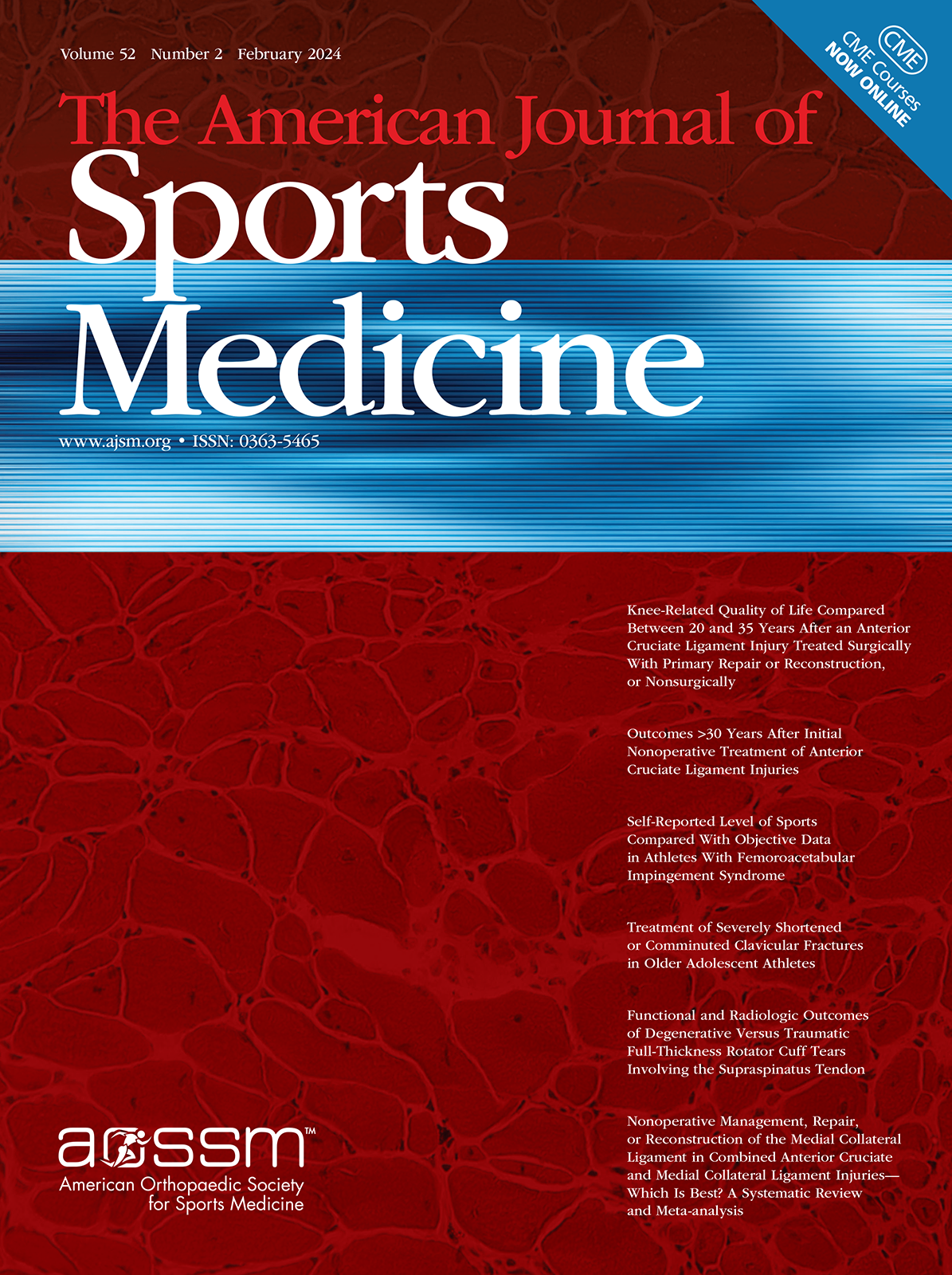
Assessing the efficacy of postoperative PRP injections following arthroscopic supraspinatus repair

Assessing the efficacy of postoperative PRP injections following arthroscopic supraspinatus repair
A Midterm Evaluation of Postoperative Platelet-Rich Plasma Injections on Arthroscopic Supraspinatus Repair: A Randomized Controlled Trial
Am J Sports Med. 2017 Nov;45(13):2965-2974Synopsis
60 patients with an isolated, full-thickness supraspinatus tear were randomized to either receive two postoperative ultrasound-guided injections of platelet-rich plasma or to no adjunct postoperative intervention. Patients were evaluated over a mean of 3.5 years for MRI (Sugaya classification) and clinical outcomes (QuickDASH, Oxford Shoulder Score, and Constant Score). At a mean of 3.5 years, there were no significant differences in clinical scores between groups, with the exception of a greater score on the abduction subscale of the Constant score in the PRP group. MRI outcomes were similar between groups at final follow-up.
Was the allocation sequence adequately generated?
Was allocation adequately concealed?
Blinding Treatment Providers: Was knowledge of the allocated interventions adequately prevented?
Blinding Outcome Assessors: Was knowledge of the allocated interventions adequately prevented?
Blinding Patients: Was knowledge of the allocated interventions adequately prevented?
Was loss to follow-up (missing outcome data) infrequent?
Are reports of the study free of suggestion of selective outcome reporting?
Were outcomes objective, patient-important and assessed in a manner to limit bias (ie. duplicate assessors, Independent assessors)?
Was the sample size sufficiently large to assure a balance of prognosis and sufficiently large number of outcome events?
Was investigator expertise/experience with both treatment and control techniques likely the same (ie.were criteria for surgeon participation/expertise provided)?
Yes = 1
Uncertain = 0.5
Not Relevant = 0
No = 0
The Reporting Criteria Assessment evaluates the transparency with which authors report the methodological and trial characteristics of the trial within the publication. The assessment is divided into five categories which are presented below.
4/4
Randomization
3/4
Outcome Measurements
4/4
Inclusion / Exclusion
4/4
Therapy Description
4/5
Statistics
Detsky AS, Naylor CD, O'Rourke K, McGeer AJ, L'Abbé KA. J Clin Epidemiol. 1992;45:255-65
The Fragility Index is a tool that aids in the interpretation of significant findings, providing a measure of strength for a result. The Fragility Index represents the number of consecutive events that need to be added to a dichotomous outcome to make the finding no longer significant. A small number represents a weaker finding and a large number represents a stronger finding.
Why was this study needed now?
Arthroscopic repair of a rotator cuff tear, though often clinically effective, suffers from a fairly high rate of retear. Platelet-rich plasma, applied either intraoperatively or as a postoperative injection, has been suggested to improve tendon healing and reduce the rate of retear. While a number of trials have reported short-term outcomes following the use of adjunct PRP therapy, few trials have provided medium-term follow-up.
What was the principal research question?
In arthroscopic supraspinatus repair, do postoperative injections of platelet-rich plasma at 7 and 14 days after surgery result in a significantly lower rate of tendon retear on MRI, over an average of 42 months of follow-up, when compared to patients who were not administered postoperative injections?
What were the important findings?
- At the mean follow-up time of 3.5 years, there were no differences in QuickDash, Oxford shoulder score, or the total Constant score between groups (p>0.05). A higher score on the strength subscale of the Constant score was observed in the PRP group (p=0.006).
- There were no differences in MRI scores or retear rates between groups, with 66.7% of the PRP group and 64.3% of the control patients rated as grade 1 using the Sugaya classification system.
What should I remember most?
In arthroscopic supraspinatus repair, there were no significant differences in clinical or MRI outcomes between patients receiving or not receiving adjunct postoperative platelet-rich plasma injections, with the exception of a possible improvement in abduction strength.
How will this affect the care of my patients?
The use of platelet-rich plasma injections as an adjunct therapy following arthroscopic supraspinatus repair does not appear to provide considerable benefit in either MRI or clinical outcomes for patients at medium-term follow-up.
Learn about our AI Driven
High Impact Search Feature
Our AI driven High Impact metric calculates the impact an article will have by considering both the publishing journal and the content of the article itself. Built using the latest advances in natural language processing, OE High Impact predicts an article’s future number of citations better than impact factor alone.
Continue



 LOGIN
LOGIN

Join the Conversation
Please Login or Join to leave comments.
Orthopaedic Surgeon - Canada
Useful study. I don't use PRP.
Orthopaedic Surgeon - United States
very useful study.